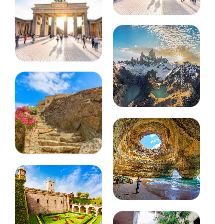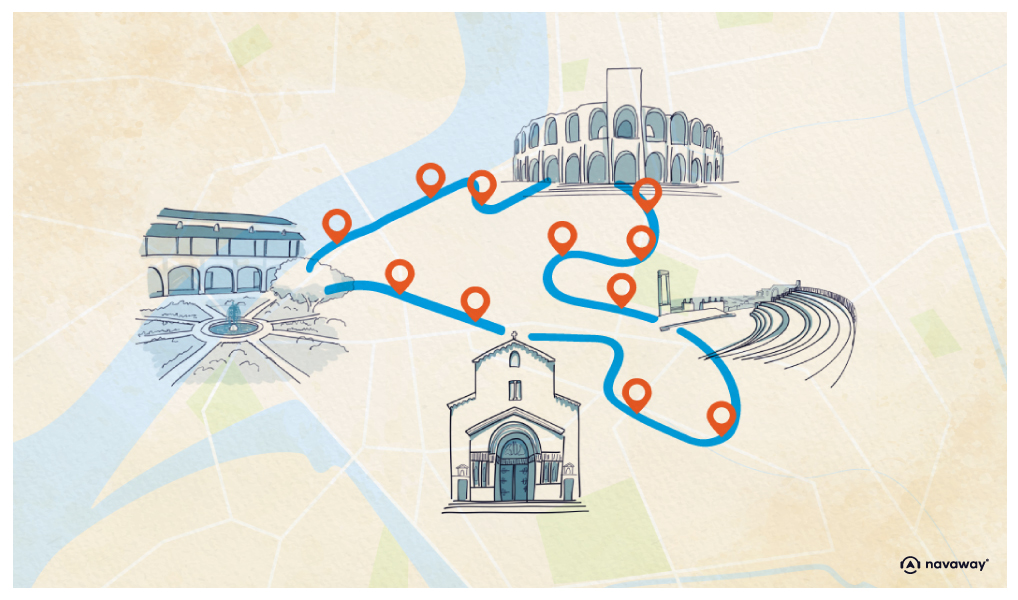
Discovering the Alpilles Regional Nature Park
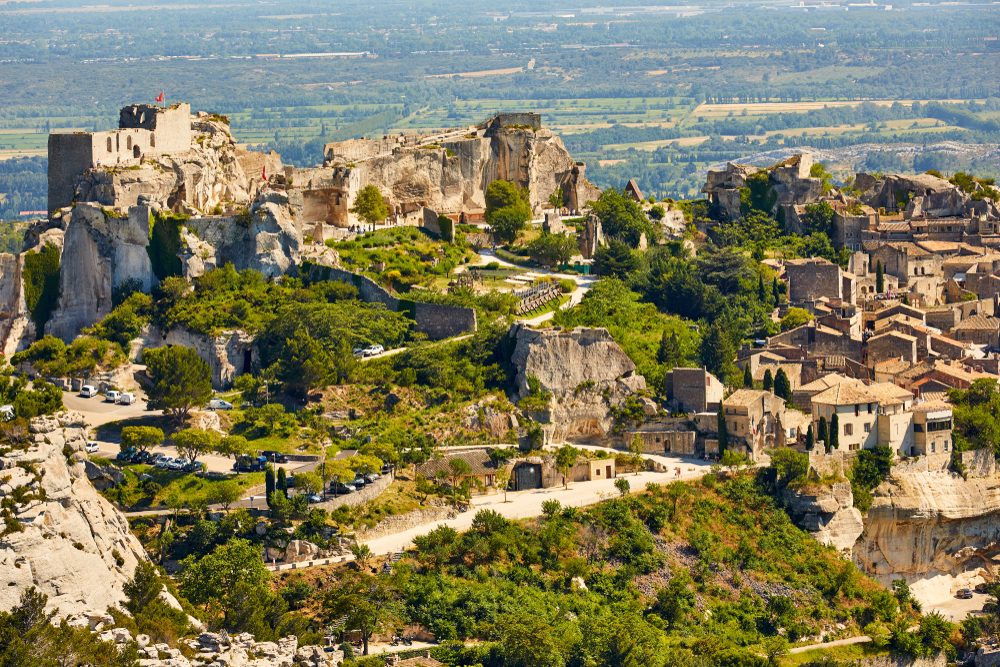
Nestling in the heart of Provence, the Alpilles Regional Nature Park boasts an exceptional landscape of fragrant garrigue, centuries-old olive groves and white stone villages. Created in 2007, this 510km² territory is home to sixteen authentic communes, remarkable archaeological sites and preserved biodiversity. From limestone ridges to verdant valleys, the Parc des Alpilles offers a total immersion in the Provençal art of living, between ancient heritage and wild nature.

1. Presentation of the Alpilles Regional Nature Park
The Parc naturel régional des Alpilles is one of the smallest regional parks in France, but certainly one of the most remarkable. Situated between the Luberon and the Camargue, this limestone massif stretches across sixteen communes in the Bouches-du-Rhône, offering exceptional landscapes shaped by four thousand years of civilisation.
This range of “small mountains” culminates at 498 metres at the summit of Les Opies, overlooking magnificent panoramas of the Crau plain, the Rhône valley and the Mediterranean. The karstic relief typical of the Alpilles massif has sculpted spectacular rock formations, secret valleys and arid plateaux dotted with lush Mediterranean vegetation.
The park protects an inestimably rich natural and cultural heritage. More than 110 listed or registered monuments dot the area, bearing witness to continuous human occupation since prehistoric times. This harmony between man and nature makes the Alpilles a model of ecological and landscape balance.
Also in the Arles guide :
- 3 beautiful villages not to be missed during your stay in the Alpilles
- Visit Alphonse Daudet’s mill in Fontvieille
2. Must-see villages in the Parc des Alpilles
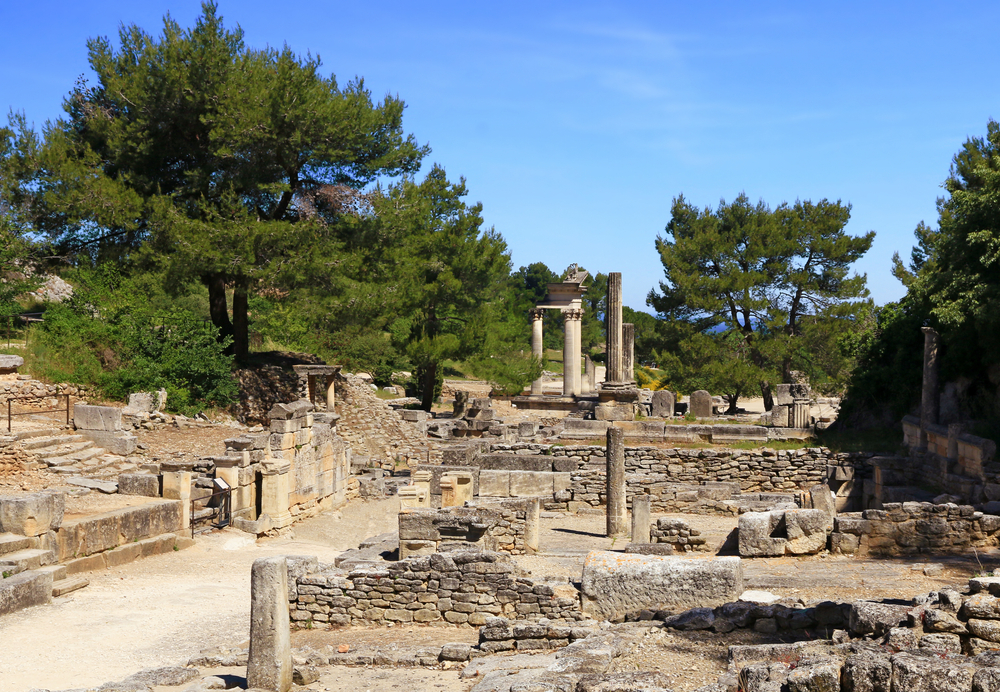
Saint-Rémy-de-Provence, birthplace of Nostradamus and Van Gogh
Saint-Rémy-de-Provence epitomises Provençal elegance, with its plane tree-shaded boulevards and lively terraces. The birthplace of Nostradamus, Saint-Rémy-de-Provence was home to Vincent van Gogh during a decisive year in his artistic career. The Dutch painter produced over 150 paintings and drawings here, immortalising the Alpine landscapes in works that have become legendary.
The Saint-Paul-de-Mausole Monastery, where Van Gogh was treated, now offers a moving trail in the artist’s footsteps. The gardens, recreated from his paintings, provide an insight into his creative process and his intense relationship with nature in Provence.
Download the audio-guided tour to discover Arles on foot and on your own
For a complete exploration of the region, we recommend Visiter Arles, the great ancient city of the Alpilles. This audio-guided tour takes you through 18 emblematic places of interest, from the Roman arena to the footsteps of Van Gogh, for a total immersion in the history of this city that is over two thousand years old.
Les Baux-de-Provence, perched medieval citadel
Listed as one of France’s most beautiful villages, Les Baux-de-Provence’s medieval silhouette stands on a rocky spur overlooking the valley. This city of stone seems to spring naturally from the limestone rock, creating an architectural ensemble of striking beauty.
The Château des Baux-de-Provence (Rue du Trencat, 13520 Les Baux-de-Provence, rated 4.1/5 on Google out of 8432 reviews) reveals the tumultuous history of the Lords of Les Baux, Princes of Orange and famous troubadours. The Carrières de Lumières transform ancient quarries into immersive art cathedrals, offering exceptional visual and sound spectacles.
Fontvieille and the legacy of Alphonse Daudet
Fontvieille treasures the memory of Alphonse Daudet and his famous “Letters from my mill”. The village is also home to some remarkable examples of Roman hydraulic engineering, notably the aqueduct and mills of Barbegal, a masterpiece of ancient engineering.
History buffs will also love the Hypoges de Fontvieille, an underground necropolis that bears witness to the site’s early Christian occupation.
Eygalières and Maussane-les-Alpilles, authenticity in Provence
Eygalières captivates visitors with its discreet charm and unspoilt architecture. This belvedere village offers exceptional panoramic views of the Massif from its rocky outcrop crowned with ancient remains.
Maussane-les-Alpilles is the olive capital of the Alpilles. Its century-old mills perpetuate the olive-growing tradition, producing PDO Vallée des Baux-de-Provence olive oil with incomparable aromas.
3. Historical heritage and outstanding archaeological sites
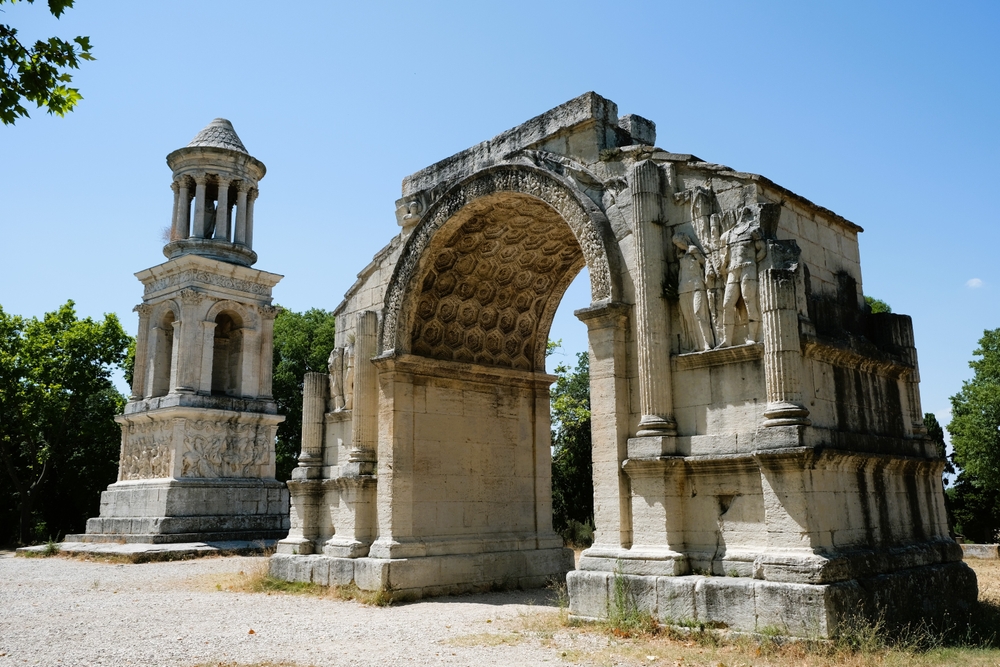
Glanum, an exceptional ancient city
The Glanum archaeological site (Route des Baux-de-Provence, 13210 Saint-Rémy-de-Provence, rated 4.2/5 on Google out of 2876 reviews) is one of the most remarkable ancient sites in Provence. This Gallo-Roman city reveals eight centuries of occupation, from the 6th century BC to the 3rd century AD.
The Antiques, a perfectly preserved mausoleum and triumphal arch, welcome visitors to the gates of the site. These funerary monuments bear witness to the gradual Romanisation of this Gallic capital of the Salyans.
The aqueduct and mills of Barbegal
The Barbegal aqueduct is a fine example of Roman hydraulic engineering. This 4th-century industrial complex fed sixteen cascading water mills, producing 4.5 tonnes of flour a day to supply Arles.
These remains, unique in Europe, bear witness to the sophisticated economic organisation of ancient Provence and its capacity for technological innovation.
Oppidums and prehistoric sites
The Caisses de Jean-Jean oppidum reveals the protohistoric occupation of the Alpilles. This fortified site controlled the communication routes between the Rhône valley and the Mediterranean.
Numerous other archaeological sites dot the massif, bearing witness to continuous human occupation and the strategic importance of this Mediterranean crossroads.
4. Biodiversity and natural riches of the Alpilles

A remarkable and protected fauna
The Alpilles Nature Park is home to exceptional biodiversity, with over 200 species of bird recorded. Bonelli’s Eagle, the park’s emblem, nests on the limestone cliffs alongside the Great Horned Owl and Egyptian Vulture.
Discreet mammals inhabit the scrubland and pinewoods: wild boar, roe deer, foxes and genets thrive in this unspoilt Mediterranean ecosystem. Reptiles find refuge in the scree slopes and dry stone walls, notably the Montpellier snake and the ocellated lizard.
Mediterranean flora and natural environments
The vegetation of the Alpilles is a perfect illustration of the region’s adaptation to Mediterranean conditions. Scrubland with thyme, rosemary and rockrose alternates with Aleppo pine forests and holm oak groves. The rocky grasslands are home to endemic species such as the Astragale de Marseille.
Centuries-old olive groves have shaped the cultural landscape of the Alpilles since ancient times. These venerable trees, some of which are over a thousand years old, produce PDO olive oil renowned the world over for its exceptional taste.
Geology and formation of the massif
The relief of the Alpilles is the result of intense tectonic activity that raised these Urgonian limestones 60 million years ago. Erosion then sculpted these soft rocks, creating the characteristic shapes of the Alpilles landscape: valleys, combes and rocky bars.
This particular geology has a direct influence on biodiversity, creating a mosaic of environments that are favourable to many specialist species.
5. Outdoor activities and nature discovery in the Alpilles
Hiking and discovery trails
The Alpilles offers more than twenty signposted hiking trails, suitable for all levels. The “sentier des crêtes des Alpilles” is the most emblematic route, linking the main peaks of the massif over 50 kilometres of pure wild beauty.
Among the not-to-be-missed walks, the Tour des Opies offers some of the park’s finest panoramas, while the stroll up to the Rocher des Deux Trous offers a spectacular view over the Crau plain. The Fontvieille botanical trail is a family-friendly way to discover Mediterranean flora.
Please note the summer regulations: between 1 June and 30 September, access to forest areas is strictly controlled to prevent the risk of fire. Be sure to check the access conditions before setting off.
Mountain biking and cycle touring
The Alpilles cycle network will appeal to both mountain bikers and road cyclists. The cycle path linking Saint-Rémy-de-Provence to Saint-Étienne-du-Grès offers a 10-kilometre family route through olive groves and vineyards.
The more challenging mountain bike trails criss-cross the ridges and valleys of the massif, offering exceptional panoramas for experienced cyclists. Hire centres offer electric bikes and mountain bikes for all levels of rider.
Horse riding
Horse-riding is a great way to discover the Alpilles. Numerous equestrian centres offer rides through pine forests and scrubland, giving access to unspoilt areas inaccessible to vehicles.
Le Petit Roman (Route de Fontvieille, 13990 Fontvieille, rated 4.8/5 on Google out of 124 reviews) organises horse-riding in the heart of the Nature Park, supervised by enthusiastic guides who know the area and its wildlife inside out.
Climbing and outdoor sports
The limestone cliffs of the Alpilles offer climbing sites for all abilities. The Aureille, Orgon and Mouriès areas offer a variety of routes in an exceptional natural setting.
Thrill-seekers can also try their hand at gliding or paragliding, taking advantage of the updrafts generated by the massif’s relief.
6. Gastronomy and local produce in the Alpilles
PDO olive oil, the green gold of Alpilles
Vallée des Baux-de-Provence PDO olive oil represents the gastronomic excellence of the Alpilles region. Produced using traditional methods in the century-old mills of Maussane-les-Alpilles, Fontvieille and Les Baux-de-Provence, this oil reveals incomparable fruity aromas.
The Picholine, Salonenque and Grossane varieties make up this prestigious appellation, producing oils with distinct flavour profiles: notes of raw artichoke, fresh almond or green apple, depending on the terroir and crushing methods used.
Provençal culinary specialities
Tapenade is the international ambassador of Alpilles gastronomy. Made from black olives, capers and anchovies, it reveals all the subtle flavours of the Mediterranean.
Maussane-les-Alpilles lamb has a well-deserved reputation for its tender, flavoursome meat. Raised free-range in the garrigues, it develops unique aromas thanks to its natural diet based on wild aromatic plants.
Goat’s cheeses from the Alpilles, in particular the Banon PDO produced in the surrounding villages, complete this authentic gastronomic palette.
Alpilles wines and tasting
The Alpilles vineyards produce wines of character in the Baux-de-Provence appellation. Family-run estates perpetuate age-old wine-growing traditions, producing vintages that perfectly express the limestone terroir of the massif.
Mediterranean grape varieties – Grenache, Syrah, Mourvèdre – flourish in this privileged climate, producing full-bodied red wines and elegant rosés, perfect accompaniments to Provençal cuisine.
7. Accommodation in the Parc des Alpilles
Mas provençaux and charming guest rooms
The traditional farmhouses of the Alpilles offer authentic accommodation in the heart of the Provencal countryside. These tastefully renovated former farmhouses offer guest rooms and gîtes with the “Valeurs Parc Naturel Régional” label.
Le Mas des Figues (Petite Route des Baux, 13210 Saint-Rémy-de-Provence, rated 4.6/5 on Google out of 187 reviews) is a perfect example of this range of quality accommodation, combining modern comfort with rustic charm in a green setting.
Luxury hotels and exceptional estates
For an exceptional stay, the Alpilles is home to prestigious establishments with an international reputation. The Domaine de Manville in Les Baux-de-Provence and Baumanière offer top-of-the-range services in exceptional settings.
These estates also offer remarkable gastronomic experiences, showcasing local produce in Michelin-starred restaurants.
Nature campsites and accommodation
In the Alpilles, nature lovers will find campsites and natural areas that preserve the authenticity of the landscape. These environmentally-friendly accommodations offer direct contact with Mediterranean nature.
8. Practical information for visiting the Parc des Alpilles
Best time to visit
Spring (April-May) and autumn (September-October) are the ideal times to discover the Alpilles. The pleasant temperatures allow you to take full advantage of outdoor activities, while the exceptional light reveals the full beauty of the landscapes.
Summer offers the advantage of long days, but the heat can limit certain activities. Winter remains mild in Provence, allowing sunny walks outside the tourist season.
Access and transport
The Alpilles is ideally situated between Avignon (25 km) and Arles (15 km), with easy access via the A7 motorway. The car remains the most practical means of transport for exploring the area, providing access to the hilltop villages and natural sites.
Summer shuttles link the main tourist sites, reducing the pressure of cars on the busiest villages.
Park House and visitor information
The Maison du Parc, located in Saint-Rémy-de-Provence (2 Boulevard Marceau, 13210 Saint-Rémy-de-Provence, rated 4.2/5 on Google out of 45 reviews), is the central information point for the region. It offers documentation, personalised advice and a programme of nature events.
The tourist offices in the Park’s communes complete this information network, offering invaluable local expertise to help you make the most of your discovery of the Alpilles.
In conclusion, the Parc naturel régional des Alpilles is an exceptional area where a thousand years of heritage and unspoilt nature combine to create a harmonious whole that is unique in Provence. From pale stone villages to wild ridges, from ancient sites to centuries-old olive groves, each discovery enriches your understanding of this Mediterranean cultural landscape. Whether you’re a history buff, a nature enthusiast or an epicurean in search of authenticity, the Alpilles will offer you an unforgettable experience at the heart of the Provençal art of living. For a complete exploration of the region, don’t hesitate to let yourself be guided as you discoverArles, the historic gateway to this exceptional territory.
Frequently asked questions
When is the best time to visit the Parc des Alpilles?
The ideal period is from April to October, with a preference for spring (April-May) and autumn (September-October). These seasons offer pleasant temperatures, exceptional light and fewer tourists. Winter remains mild, but some sites may have reduced opening times.
How many days does it take to visit the Alpilles?
Allow at least 3 days to discover the main villages and major sites. A week will allow you to explore in depth, including hikes, archaeological sites and gastronomic experiences. Nature lovers and hikers may wish to consider a longer stay to take full advantage of the network of trails.
Can you visit the Alpilles without a car?
Although a car is recommended for full exploration, there are a number of alternatives: summer shuttles between the main sites, electric bikes for hire, and hiking trails for the more sporty. Public transport between the villages is limited.
What are the must-see sites in the Parc des Alpilles?
Must-sees include: the archaeological site of Glanum and the Antiques Museum, the Château des Baux-de-Provence and the Carrières de Lumières, the village of Saint-Rémy-de-Provence in the footsteps of Van Gogh, the Barbegal aqueduct at Fontvieille, and the hiking trails along the crests for exceptional panoramic views.
200 audioguided tours for cities all around the world
Download